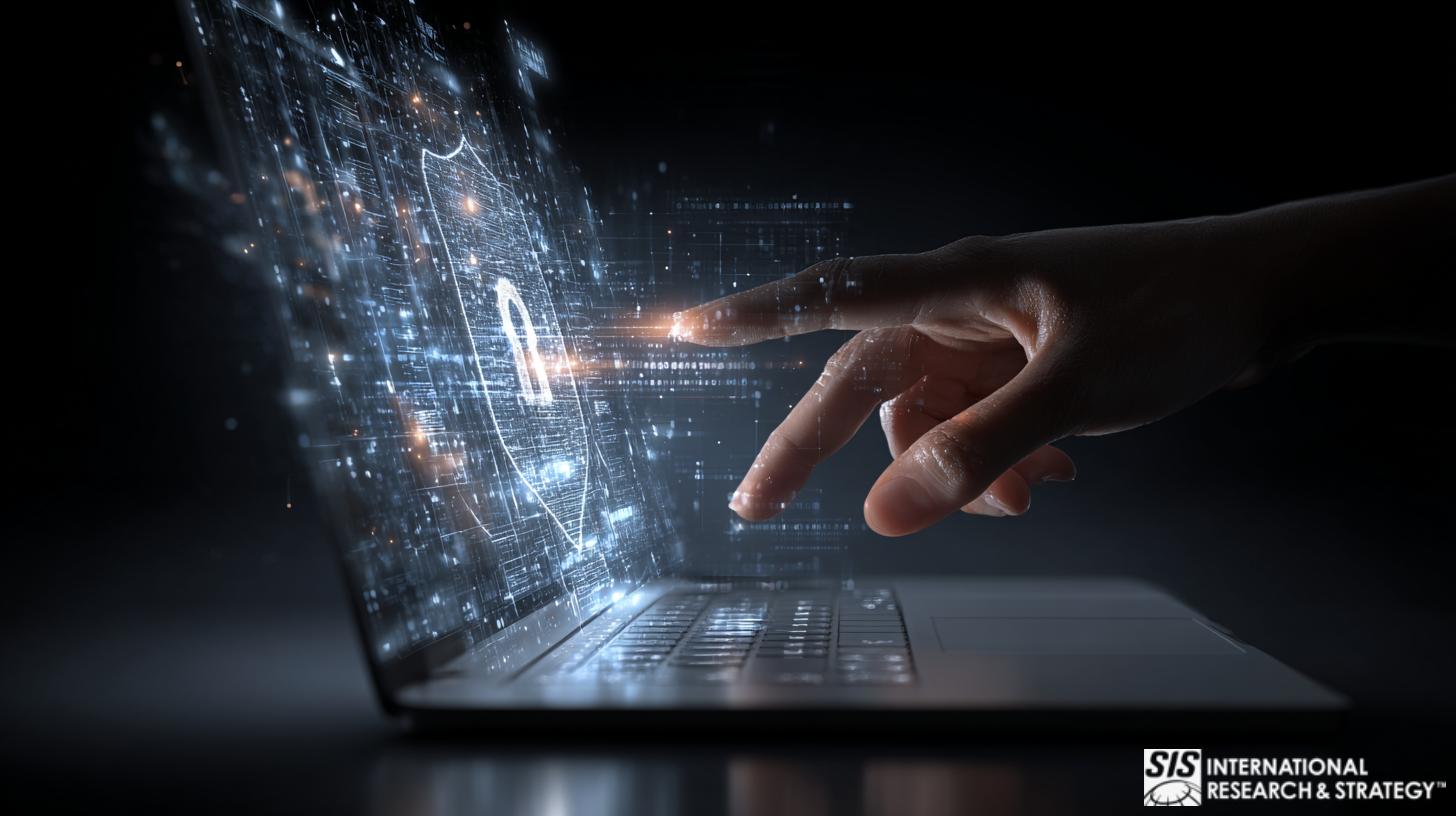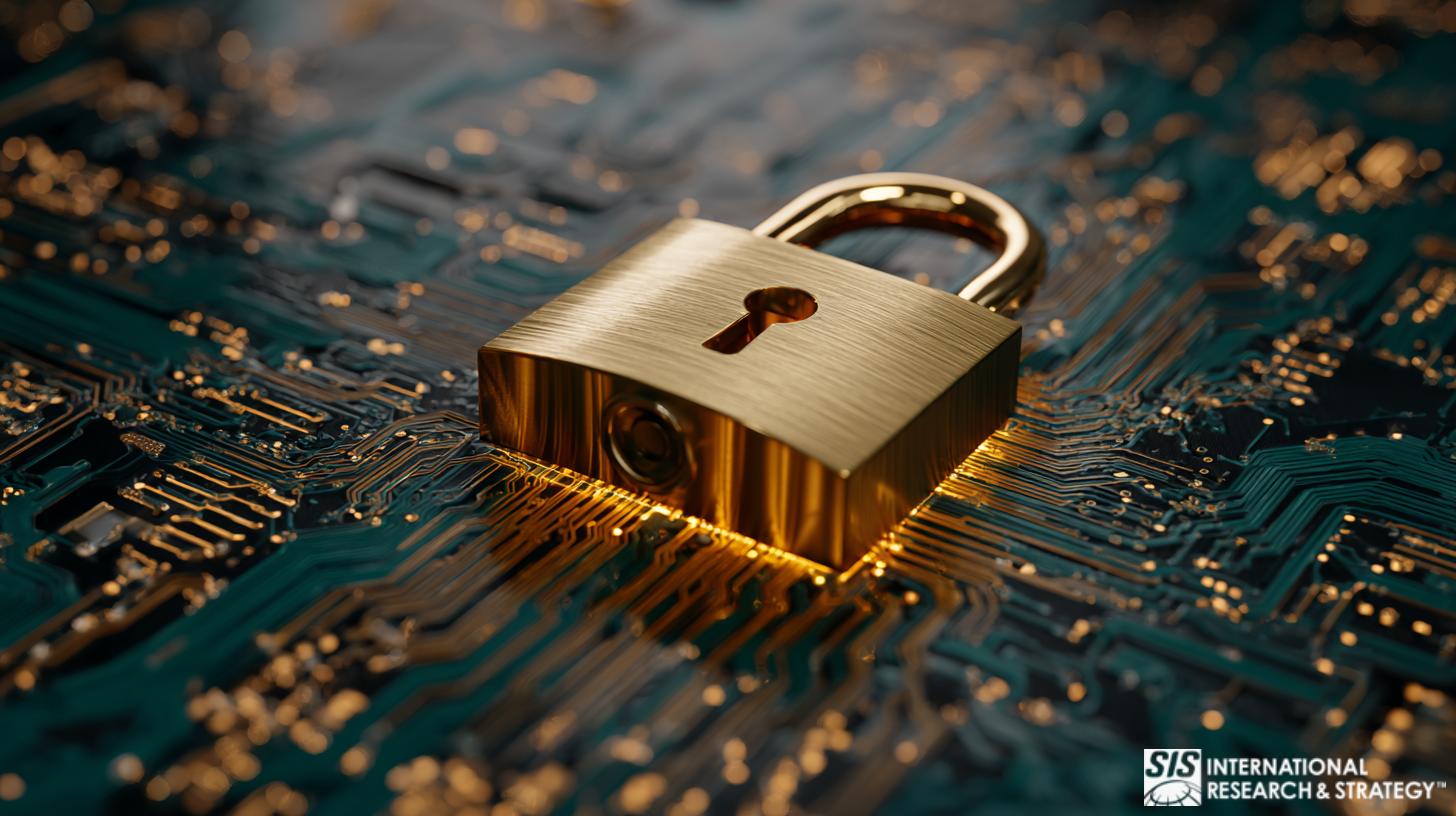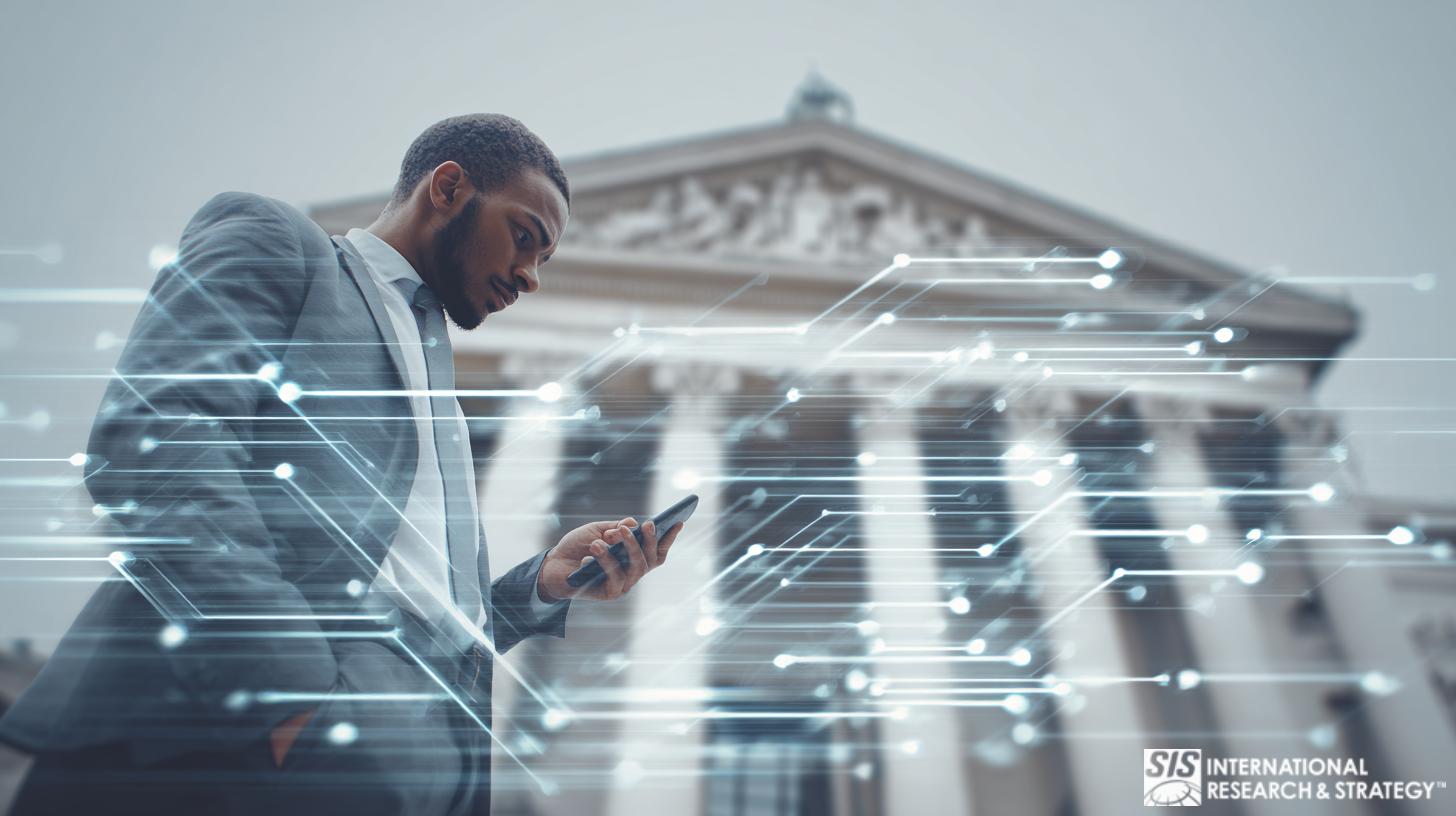
Zupełnie inny wirus
Krótki przegląd trwającej walki o powstrzymanie fali cyberataków w sektorze opieki zdrowotnej.
In addition to subversive hacking in the business world, where private information can be compromised and sensitive company data absconded with, cybersecurity measures are now employed to negate the effects of hacking by foreign entities, used a political weapon. It is an increasingly serious global problem, and one that has necessitated the implementation of advanced cybersecurity methodologies to counteract the increasingly sophisticated capabilities of hackers to subvert these very systems.
“In recent years, cybersecurity has been a growing concern in healthcare, with high-profile cyber-attacks and vulnerabilities causing disruptions for insurers, hospitals, and medical device makers. The stakes for patients are high too as patient data could be lost or tampered with, hospital services interrupted, or patients harmed through attacks targeting specific devices … “ 1
Interwencja Rządu w Walki z Cyberprzestępczością
The rapid digitization of the healthcare industry makes this sector particularly vulnerable to cyber attack, and this fact has not been lost on the US Congress. The House Energy and Commerce Committee recently convened to address cybersecurity in the health sector. Information Sharing and Analysis Centers (ISACS) may be key in providing enhanced security for healthcare providers and in thwarting efforts of would-be cyber attackers.
Through the interactive efforts of the 24 organizations that comprise the National Council of ISACs (NCI), great efforts are being made to “maximize information flow across the private sector critical infrastructures and with government. Critical infrastructure sectors and subsectors that do not have ISACs are invited to contact the NCI to learn how they can participate in NCI activities.”2
It is, of course, a Herculean undertaking to strengthen the partnership between public and private entities in healthcare with regard to cybersecurity, considering the myriad industries and agencies of government that are responsible for regulating and delivering said healthcare. Congress has been encouraged to provide tax breaks and other incentives to prompt companies to get involved with the ongoing effort of ISACs.
Słabe uczestnictwo utrudnia wdrażanie cyberbezpieczeństwa
Unfortunately, poor participation rates among healthcare facilities have been a persistent problem in the ongoing efforts to implement effective cybersecurity measures across the sector. According to Terry Rice, vice president of IT risk management and chief information security officer at Merck, “companies may be hesitant to share information within an ISAC if they fear the information will not remain confidential to its members.”3
“I think the most shocking statistic was really the fact that 40% of the individuals at the top of an organization–executives like CEOs and CIOs, and even board members–didn’t feel personally responsible for cybersecurity or protecting the customer data.” Dave Damato, Chief Security Officer at Tanium, on CNBC’s Squawk Box, mówiąc o cyberbezpieczeństwie w branży opieki zdrowotnej 13
Wysokie koszty cyberprzestępczości w opiece zdrowotnej

Aside from the obvious threat of compromised patient information and other incidents of data theft, failures of cybersecurity are incredibly expensive, to the tune of $6.2 billion annually, according to a 2016 research project conducted by the Poneman Institute. Insights revealed in their studies revealed that “nearly 90 percent of the healthcare organizations … had endured a data breach during the previous two years. Forty-five percent had more than five data breaches in that period, with the average cost of a cyber attack totaling $2.2 million. The data contained in electronic health records (EHRs) is often cited as the reason healthcare is such an attractive target in the eyes of a hacker.”4
As secure as people like to believe their health information is in the possession of their doctor’s office or hospital, it is often not the case. The ongoing digitization of health records has been an expensive proposition for the healthcare industry. Securing all that information is another monumental expense, and sometimes this part of the cybersecurity equation has been neglected in the interest of cost-savings, or just by the large-scale nature of the overall endeavor.
Lukratywny charakter cyberkradzieży w opiece zdrowotnej
Of course, health records are a hot commodity on the black market, and they can fetch top dollar from parties seeking to obtain personal information, billing addresses, and credit card numbers. Hacking can be a very lucrative enterprise, indeed. Consider this example. “Hackers made off with more than 2.2 million patient records from Fort Myers, Florida-based 21st Century Oncology in March of 2016. A month later, someone stole a laptop with 205,748 unsecured patient records on it from Premier Healthcare, LLC.” 5
Pojawienie się oprogramowania typu ransomware
Ransomware to nowe pojęcie dla większości ludzi, którzy zapoznali się z ostatnimi atakami WannaCry na całym świecie, paraliżującymi krytyczne systemy infrastrukturalne i wymuszającymi znaczne okupy finansowe od tych, którzy padli ofiarą lęku i potencjalnej utraty danych charakterystycznych dla takich ataków. Branża opieki zdrowotnej jest szczególnie podatna na ataki ransomware.
„Szpitale są idealnym celem dla tego rodzaju wymuszeń, ponieważ zapewniają krytyczną opiekę i polegają na aktualnych informacjach z dokumentacji pacjentów. Bez szybkiego dostępu do historii leków, dyrektyw chirurgicznych i innych informacji, opieka nad pacjentem może zostać opóźniona lub wstrzymana, co sprawia, że szpitale są bardziej skłonne zapłacić okup niż ryzykować opóźnienia, które mogą skutkować śmiercią i pozwami sądowymi”. 6
Ransomware malware, in effect, locks up a computer and makes data inaccessible unless a ransom is paid to the perpetrator. Usually, this payment is made in the form of Bitcoin. In most instances, a time limit is established for the ransom to be paid, otherwise the computers data will be destroyed. Though most stricken parties don’t pay the ransom, enough do to make it a particularly lucrative criminal enterprise.
The healthcare industry has been vulnerable to ransomware attacks because, surprisingly, many hospitals have taken inadequate steps to prevent cybersecurity breeches. Instead, most hospitals have focused their primary concern on meeting HIPAA compliance and meeting federal guidelines to ensure the security of patient information. Ultimately, most employees in healthcare are simply not trained well enough to recognize and thwart cyber attacks before they occur. Even when adequate training and cybersecurity measures are in place, it is a continuous challenge to outwit perpetrators who constantly remain one step ahead of the game.
Urządzenia IoT również są zagrożone
To add a layer of seriousness to the present situation, cyber attacks can affect not only computers, but devices that are connected to them, as well. Medical tools, heart and glucose monitors are but a few examples of devices vulnerable to cyber attack. Vice-President Dick Cheney famously demanded that his pacemaker be made safe from cyber attack, lest those with ill-intent not manipulate the function of his device remotely. Quite frankly, interference with such devices can be deadly for the patients who depend on them to live.
Jako przykład hakowania medycznego: „W jednym z obecnie stosowanych exploitów, znanym jako MedJack, atakujący wstrzykują złośliwe oprogramowanie do urządzeń medycznych, aby następnie rozprzestrzenić je w sieci. Dane medyczne odkryte w tego typu atakach mogą być wykorzystane do oszustw podatkowych lub kradzieży tożsamości, a nawet do śledzenia aktywnych recept na leki, umożliwiając hakerom zamawianie leków online, a następnie sprzedawanie ich w dark webie”. 7
„No patients have, as far as I know, been killed due to a hacked pacemaker, but patients have been killed due to malfunction[s] of their medical devices, configuration errors, and software bugs. This means that security research in the form of pre-emptive hacking, followed by coordinated vulnerability disclosure and vendor fixes, can help save human lives.” Marie Moe, badaczka ds. bezpieczeństwa w SINTEF, w „No dalej, hakerzy. Złamcie mi serce” (Przewodowy)13
FCC zasugerowała teraz, aby dostawcy urządzeń medycznych IoT wbudowali środki bezpieczeństwa w produkty, które produkują; kluczowe słowo jest sugerowane. W rzeczywistości wdrażanie obowiązkowych praktyk i wymagań bezpieczeństwa dla tych producentów jest czasochłonnym wysiłkiem. Ponadto sieci przypisane do przekazywania danych między urządzeniami i bazami danych również mają krytyczną potrzebę wdrożenia i monitorowania cyberbezpieczeństwa.
Nowy prezydent, nowy porządek
There was much speculation as to how the Trump administration would address issues of cybersecurity. On May 11, 2017, the president signed an executive order that mandated a review of the nation’s overall abilities to combat criminal cyber-activity. The order places the brunt of responsibility concerning cybersecurity on federal agencies which were to do risk assessments and turn in their respective reports within 90 days. Additional reports examining critical infrastructure risks were due six months after the president’s order was issued.
„Rozporządzenie wzywa do przeglądu zagrożenia, jakie stwarzają botnety, których celem są strony internetowe z automatycznie generowanym ruchem spamowym. Botnet Mirai był odpowiedzialny za znaczące przerwy w działaniu Internetu w zeszłym roku. Ale Access Now twierdzi, że zarządzenie powinno również dotyczyć procesu ujawniania luk w zabezpieczeniach przez rząd i jego reakcji na naruszenia danych”.
There is no overall preventative measure or measure that can eliminate the risk of cyber attacks. Rather, hospitals, clinics, and private practices can only hope to work together and manage the continuous risks in the interest of protecting the private information and the general safety of their patients. Concurrently, continuous technological advancements will hopefully address the vulnerability of medical devices and computer networks.
Te wysiłki mające na celu ograniczenie potencjalnie katastrofalnych skutków cyberprzestępczości w sektorze zdrowia i poza nim wykraczają daleko poza Stany Zjednoczone. Obecnie podejmowane są globalne wysiłki mające na celu powstrzymanie fali cyberataków na całym świecie lub przynajmniej zminimalizowanie wpływu tego, co wydaje się być niekończącym się wysiłkiem cyberprzestępców, aby infiltrować systemy opieki zdrowotnej i siać spustoszenie i wymuszać, gdziekolwiek to możliwe, w jakimkolwiek nikczemnym celu.
Polityczne motywy ataków cybernetycznych

With the hostile political climate that exists between North Korea and virtually every other country in the civilized world, it is not surprising that the rogue nation has been cited as a probably offender in the recent WannaCry ransomware attacks, and other ill-willed endeavors undertaken for political reasons and for the purposes of financial extortion.
„Badacze zajmujący się cyberbezpieczeństwem znaleźli techniczne wskazówki, które ich zdaniem mogą łączyć Koreę Północną z globalnym cyberatakiem „ransomware” WannaCry, który… zainfekowano ponad 300 000 maszyn w 150 krajach. Symantec and Kaspersky Lab said … some code in an earlier version of oprogramowanie WannaCry pojawił się również w programach używanych przez Grupę Lazarus, którą badacze z wielu firm zidentyfikowali jako operację hakerską prowadzoną przez Koreę Północną”. 10
Nie wszyscy eksperci wierzą, że atak ransomware WannaCry był motywowany względami finansowymi. Niektórzy, jak Matthew Hickey z brytyjskiej firmy konsultingowej Hacker House, uważają, że sprawcy chcieli po prostu „spowodować jak największe szkody”. Tak było z pewnością w krajach, które zostały najbardziej dotknięte atakiem, w tym w Indiach, Tajwanie, Ukrainie i Rosji.
Niektórzy, jak rosyjski przywódca Władimir Putin, obwinili NSA za to, co, jak twierdził, było ich rolą w atakach ransomware WannaCry. Uważa się, że technologia WannaCry „opiera się na wyciekłym narzędziu wykorzystującym lukę w zabezpieczeniach systemu Windows, która najwyraźniej pochodzi od NSA. „Jesteśmy w pełni świadomi, że dżiny, w szczególności te stworzone przez tajne służby, mogą zaszkodzić swoim autorom i twórcom, jeśli zostaną wypuszczone z butelki” — powiedział Putin w Pekinie, według rosyjskiej państwowej agencji informacyjnej TASS.” 11
“This next president is going to inherit the most sophisticated and persistent cyber espionage cultures the world has ever seen, He needs to surround himself with experts that can expedite the allocation of potent layers of next-generation defenses around our targeted critical infrastructure silos.” James Scott, Senior Fellow, Institute for Critical Infrastructure Technology 14
Trendy w walce z cyberatakami w sektorze ochrony zdrowia
Obviously, the threat of cybersecurity breaches across all sectors of business and industry will not abate. In healthcare, there will be an ongoing and incessant need to improve technology and overall vigilance to avoid disastrous incidents in the future. Certain protective trends are emerging that might be seen as the future of cybercrime deterrence in healthcare.
At the top of the list is an increasing migration to cloud-based information security tools. This move “will allow the tools to be updated more dynamically to address zero-day type malware. This move to the cloud should ultimately make it more economical to make these tools available to all healthcare providers – large and small.” 12
In addition, the healthcare industry will be forced to encourage increased information sharing and collaboration across health networks and between facilities. This mutual cybersecurity effort will be difficult to instigate as health institutions are often quite insular by nature. It is predicted that this sharing of information will reach beyond healthcare to include many sectors of business and institutional endeavors to minimize risks for all involved.
Ultimately, the effort to negate the dangers of cybersecurity breaches, ransomware, and new and emerging threats in this arena will come down to education and awareness on all employee levels in healthcare and beyond. When everyone is well-educated and made to see warning signs of cyber-risks and what they can do to be part of an overarching effort to stem the tide of cyber-incursion, the healthcare industry and all protectors of civilized information sharing around the globe will continue to make meaningful strides towards limiting the damaging effects of cybercrime in all sectors.
AI-Driven Website Security: WP Safe Zone for Healthcare
In the healthcare sector, where sensitive patient data is a prime target for cyberattacks, robust website security is critical. The rise of AI in cybersecurity is providing powerful solutions to combat these threats. One standout example is the WP Safe Zone plugin, tailored for WordPress websites.
WP Safe Zone utilizes artificial intelligence to protect websites from malware, brute force attacks, and unauthorized access. Its AI algorithms constantly monitor and adapt to emerging threats, ensuring real-time protection for healthcare organizations’ online platforms.
As cyber risks in healthcare continue to grow, tools like WP Safe Zone demonstrate how AI can safeguard critical systems, ensuring both data security and compliance with strict regulations.
Możemy pomóc w Twoich działaniach na rzecz cyberbezpieczeństwa
SIS International Research spędziło dziesięciolecia na interakcji z branżą opieki zdrowotnej na wielu poziomach, od niezależnych praktyk rodzinnych po wielopoziomowe i monolityczne sieci opieki zdrowotnej. Nasze wyjątkowe zrozumienie wyzwań, przed którymi stoją firmy i instytucje w sektorze opieki zdrowotnej, jest niezrównane. Dostarczamy badania i informacje na temat interesariuszy[/fusion_text][fusion_text]
Nasze rozwiązania obejmują:
Dzisiaj, z dodatkową złożonością zagrożenia narzuconego przez rosnącą cyberprzestępczość skierowaną przeciwko naszym najbardziej szanowanym instytucjom opieki zdrowotnej i pacjentom, którym służą, traktujemy naszą rolę z najwyższym stopniem powagi. Jako firma, która szczyci się zrozumieniem znaczenia i wieloaspektowej natury branży opieki zdrowotnej, będziemy nadal służyć praktykom, placówkom i organizacjom związanym ze zdrowiem, oferując te same wysokiej jakości i kompleksowe możliwości badawcze, których nasi klienci oczekują i wymagają. W ten sposób mamy nadzieję, że pomożemy społeczności medycznej zrozumieć i zwalczać bardzo realne i poważne zagrożenie ataków cybernetycznych w sektorze opieki zdrowotnej.
Do opracowania niniejszego opracowania wykorzystano następujące źródła:
http://www.raps.org/Regulatory-Focus/News/2017/04/04/27267/Cybersecurity-House-Committee-Looks-to-Build-on-Public-Private-Partnerships/#sthash.x4Xvdf6q.dpuf
https://www.nationalisacs.org/
http://www.raps.org/Regulatory-Focus/News/2017/04/04/27267/Cybersecurity-House-Committee-Looks-to-Build-on-Public-Private-Partnerships/#sthash.x4Xvdf6q.dpuf
https://learningnetwork.cisco.com/blogs/talking-tech-with-cisco/2017/03/21/cybersecurity-and-healthcare-a-forecast-for-2017
https://learningnetwork.cisco.com/blogs/talking-tech-with-cisco/2017/03/21/cybersecurity-and-healthcare-a-forecast-for-2017
https://www.wired.com/2016/03/ransomware-why-hospitals-are-the-perfect-targets/
https://www.wired.com/2017/03/medical-devices-next-security-nightmare/
https://techcrunch.com/2017/05/11/trump-signs-long-delayed-executive-order-on-cybersecurity/
http://www.healthcareitnews.com/news/top-10-cybersecurity-must-haves-2017
http://www.dingit.tv/highlight/1441974?utm_source=Embedded&utm_medium=Embedded&utm_campaign=Embedded
www.healthcareitnews.com/blog/3-trends-shaping-future-cybersecurity
https://www.forbes.com/sites/danmunro/2016/12/18/top-ten-healthcare-quotes-for-2016/#5f47fb6b127f
http://www.goodreads.com/quotes/tag/cyber-security



